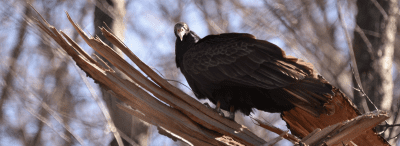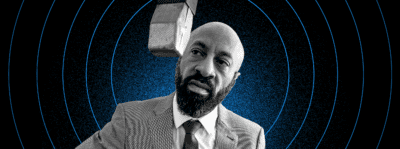Eight Brooklyn Collage Artists You Need to Know
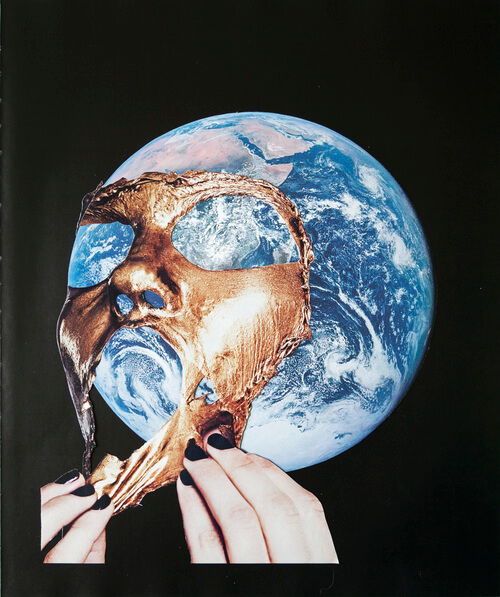
From the “Cut and Paste” series by Daniel Greer c/o danielgreer.photography
When genius struck Pablo Picasso and he pasted a patch of oilcloth with a chair-cane design to a work-in-progress, it was an historical moment—Picasso became the first oil painter to use the collage technique (his contemporary, Georges Braque, had been the first who had used it in his charcoal drawings, slightly before Picasso). The year was 1912, and Picasso was pushing modernism through its teenage years.
Almost one hundred years later, there’s a cadre of Brooklyn-based artists who are now pushing the collage technique through the teenage years of the Digital Age. And the results are visually stunning works made of traditional materials like magazine clippings, paint, and found objects—as well as images sometimes taken from the Internet, manipulated by Photoshop, or touched up via GIMP.
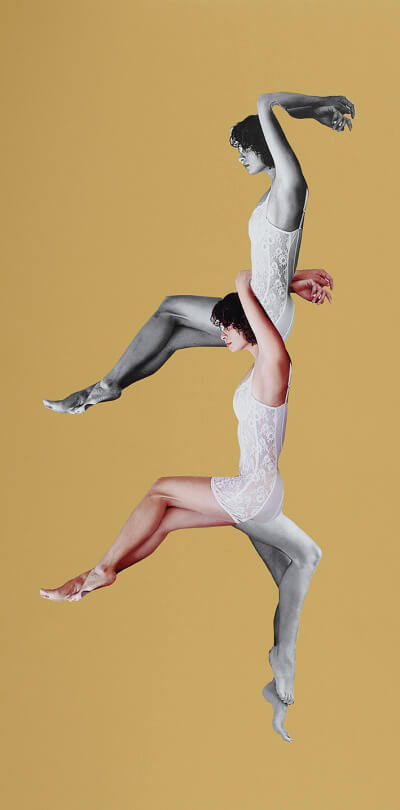

From “I See A Red Door” exhibition at Pure House (2015) c/o Beril Gulcan
Beril Gulcan: Brooklyn-based Turkish photographer Beril Gulcan meticulously takes photographs of everything and everyone from strangers, to birds, to tomatoes, to the sea and then slices them apart—only to piece everything back together afresh—with cutouts from Playboy, Life, and National Geographic magazines.
“I love making things with my hands,” Gulcan says. “Cutting and gluing things is something I’d never done as a photographer until two years ago. I also like collecting old magazines, and I get so much inspiration from the old advertisements in these magazines—even just reading them inspires me.”
Gulcan’s eye-catching work playfully captures what would otherwise be a hidden dimension within her subjects. “For me a portrait photograph says a lot,” she adds. “But sometimes, you need some other tools to make it look more appealing in our day and age, like Photoshop, paint, or collage.”
Gulcan’s work will be on view at Santos Anne on Wednesday, September 2nd, from 6-11pm (366 Union Avenue, Williamsburg
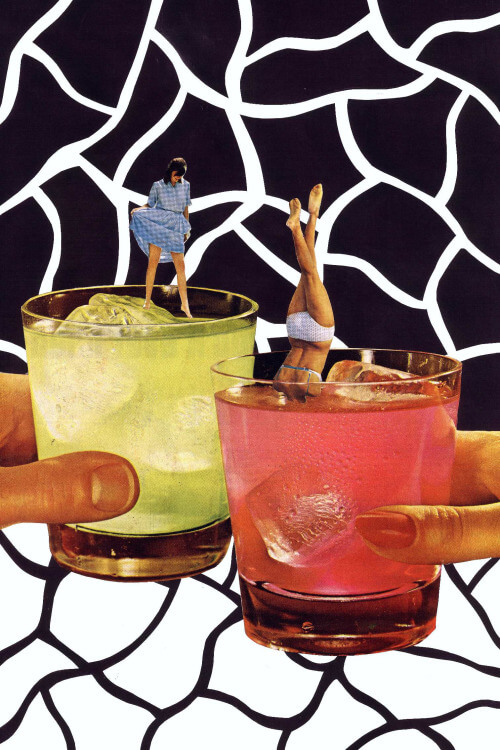

“Cocktail Party/ Like a Band-Aid” (2015) c/o Kevin-burzynski.com
Kevin Burzynski: Photographer and artist Kevin Burzynski was born in Philadelphia and grew up in a suburb outside of Buffalo, New York. He moved to Bushwick in 2014 and quickly began getting attention for his collage art. “The most appealing thing to me about the collage technique is that 95% of the time spent ‘making’ a collage, for me at least, is just thinking about it,” he says.
“In my earlier work, I would usually only use cutouts from old magazines and then glue them onto poster-boards, but that can get pretty old,” Burzynski explains. “Sometimes, that’s all a piece calls for and you have to leave it at that. But, he adds, “a lot of times now I’ll find myself switching things up and having to go outside of that realm and play with mixed media.” And, thus he’s used pill organizers, Band-Aids, dead bees, and obituaries alongside paint and oil pastels.
Burzynski’s collages speak to feelings of wanderlust and romantic desire, comment on the influence of mass media, and recall memories of an idyllic childhood. There’s a sense of innocent wonder about the world at large. “The message in each piece is always pretty different for me,” he says. “Sometimes I’ll try to show how easy it is to feel like you’re isolated or helpless in a world with so much crazy stuff going on. Sometimes I just want to make something happy and pure, like something that would be in a children’s book, or create a scene that is nostalgic of a niche in Americana that you don’t really see anymore.”
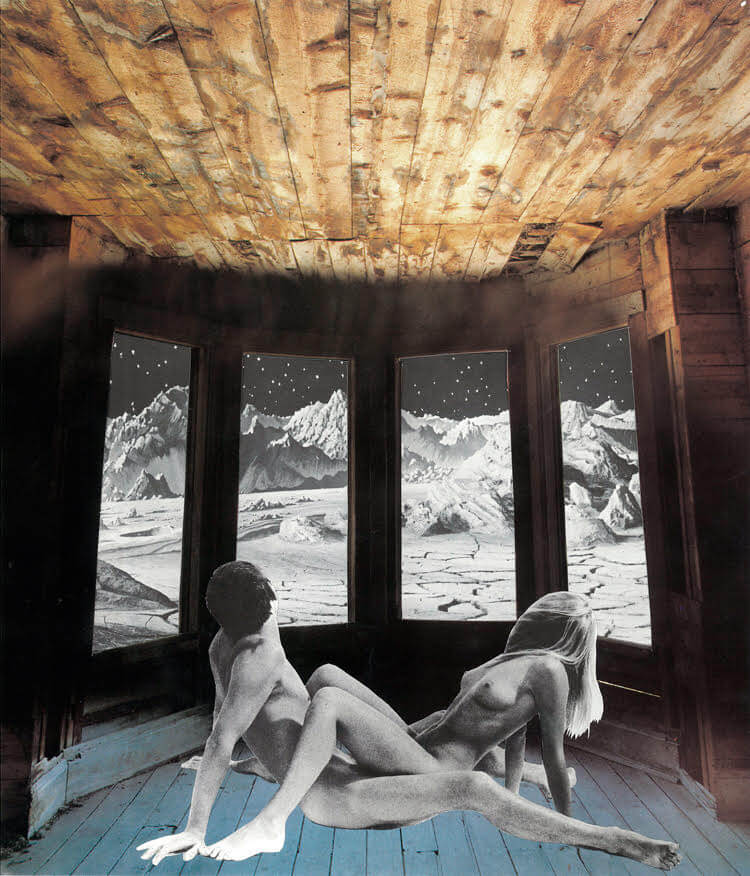

c/o Creativpaper.com
Morgan Jesse Lappin: At this point in his career, Morgan Jesse Lappin manages a hanging/rolling file system with “hundreds and hundreds of pre-cut clips, and over 50 different categories,” he says. “My treasure trove of clips resides in my room, which has looked the same since 1995.” He sources his images only from old encyclopedias and other older publications, and puts his works together using a physical cut and paste/tape method.
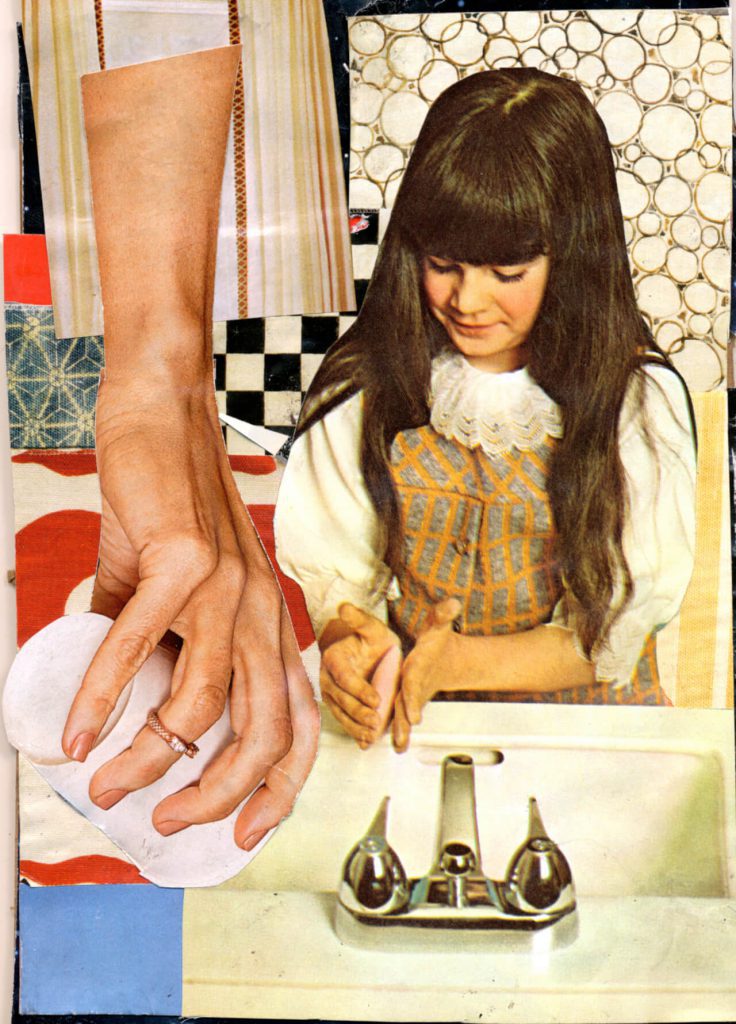

“Teaching by Example” (2015) c/o Katie Raffa
Katie Raffa: While still an art school student, Katie Raffa began to make video collages along with a friend and occasional collaborator, Joslyn Crocco. The summer after she graduated from college, she found herself broke with a ruptured ACL and facing a few weeks of limited mobility. Paper collage “was an easy way to continue my art practice and experiment,” she says. “Collage allows me to express myself beyond my own abilities. I do not have access to the best camera equipment nor the best paint and paper so working in collage gives me material that I wouldn’t necessarily be able to create on my own.”
Since Raffa is fascinated by women’s portrayal by the media, a main source of her images are women’s magazines—in addition to items that she finds on the curb. “As the idiom goes,” Raffa says, “‘One man’s trash is another man’s treasure,’ and us young collage artists truly live by that.”
Raffa adds that, “The Internet has had a huge impact on collage art and they go hand-in-glove accordingly. Collage is all about recycling and remixing, while the internet has disrupted our notions of content ownership and copyright.”
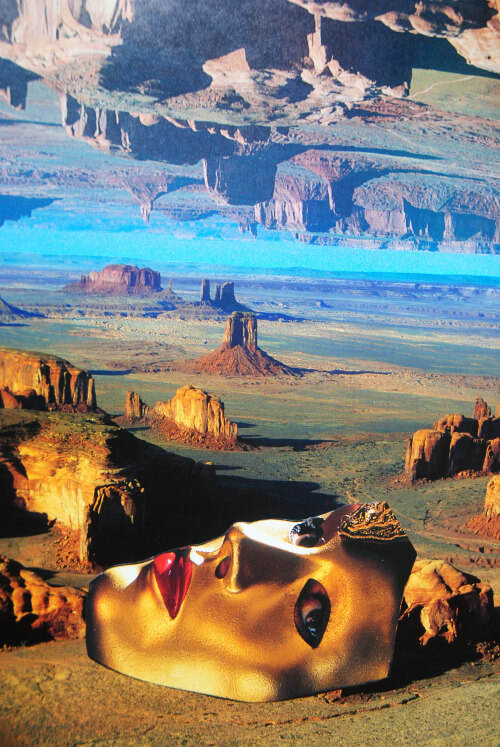

c/o Johnturck.tumblr.com
John Turck: In late 2012, Turck began to dabble in collage works and soon found himself dedicated to the technique, prolifically uploading new pieces online almost daily. His creations take a colorful, surreal approach, much like the whimsical photographs of Ryszard Horowitz or the other-worldly paintings of Rafal Olbinski (although he cites Jerry Uelsmann and Eugenia Loli as influences).
“I want to make a handmade collage that appears like it was done in Photoshop,” he has said, “where the coloring, shapes, lighting, everything just fits and works well together. In the process of combining these elements, each piece will take on its own life and a scene or story will start to emerge.”
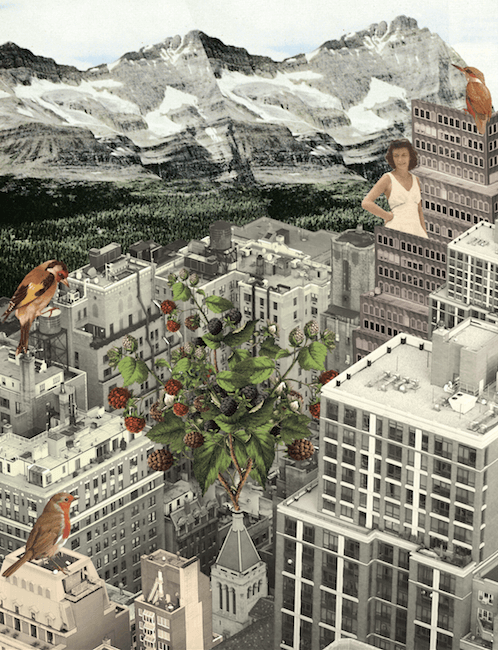

“smultronställe” (2015) c/o LizTokatlilar.com
Liz Tokatlilar: Williamsburg-based graphic designer and art director Liz Tokatlilar has been creating collage works for the past three years and enjoys the freedom the technique gives her to express a variety of realities and stories in one layout. “Every image is from unique sources; therefore, finding the right image that fits into the story takes time,” she says.
Tokatlilar turns to “old magazines, digital galleries, a scanner, and Photoshop” to make her art, which results in a vision that, at times, has included modern skyscrapers alongside ancient kings, photo cameras, dead revolutionaries, retro convertibles and pious saints. As an interactive way of storytelling, Tokatlilar also creates animated collages.
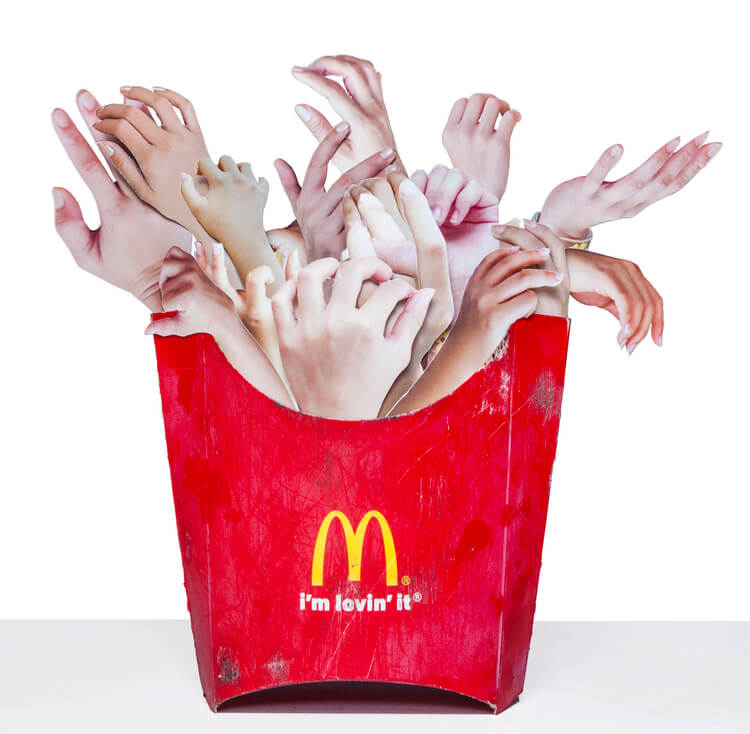

From the “Cut and Paste” series by Daniel Greer c/o danielgreer.photography
Daniel Greer: After graduating with a degree in film from Fairfield University, Daniel Greer had an opportunity to train with Michael Weber, traveling to over 30 cities around the globe before he made Brooklyn his home base. “My work explores the dichotomy of natural and man made landscapes with the intent of revealing the latent power structures shaping modern society,” Greer writes.
Thus, Greer’s work touches upon serious topics like pollution, consumerism, instant gratification, globalization, and the fast-food like luxury industry. Looking at Greer’s work, it’s hard not to have a visceral reaction: His collages hold up a mirror to our collective decay. “I utilize the same processes, aesthetics, and mediums of mass communications in an attempt to subvert the misleading messages of consumption and self-interest,” writes Greer, with the hope that his work will spark “active conversations of [these] complex and controversial topics.”
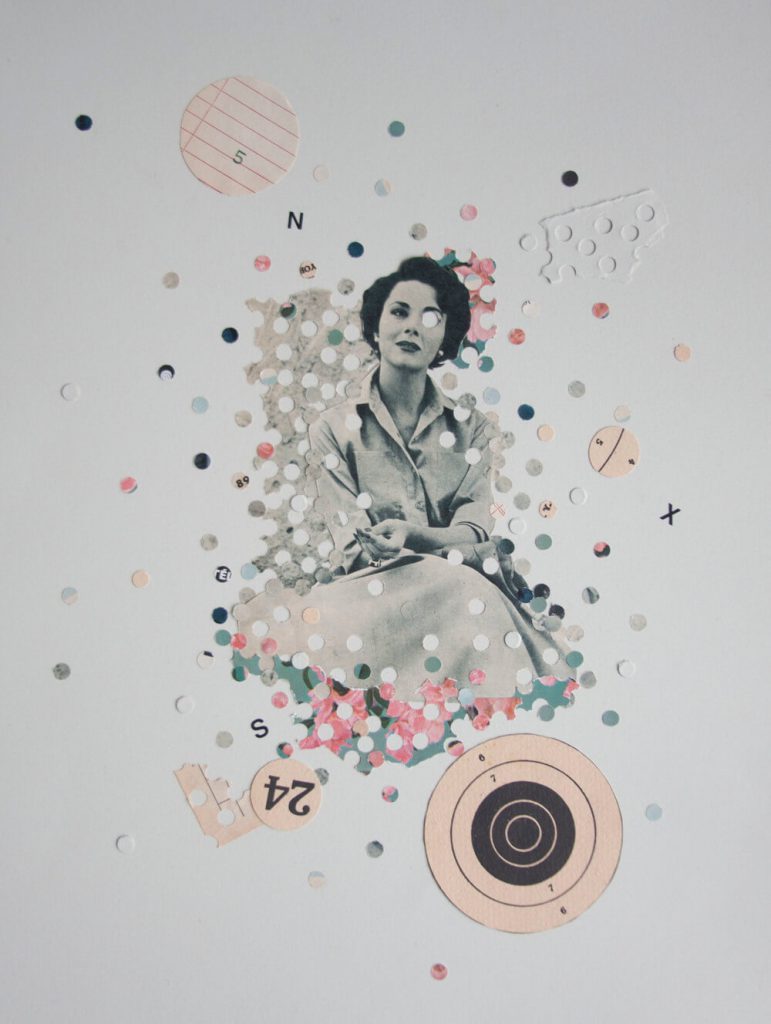

“Tinderella,” 12″x16″, (2015) c/o Lizziegill.com
Lizzie Gill: There’s a certain, longing feeling associated with every preceding decade—from the shiny big-haired materialism of the 80s to the raging disco 70s to the soda pop 50s. Maybe we’ve never experienced those years or hardly even remember them, but they’re still woven into the fabric of our culture. And, it’s within this history and these emotions that Lizzie Gill works, taking a “nostalgic look at both the American past and innocence with a twist,” she writes.
Her collages explore “everyday life, human agency and the disingenuous,” which, she writes, “is often conducted behind a series of computer screens” in the Digital Age. Capturing and examining a bygone time through the lens of our own pluralism, Gill skillfully sheds light on both our constructed history and our historical ideals.
Along with Lappin, Gill is a co-founder of the Brooklyn Collage Collective and the associate curator at Sugarlift Gallery in Brooklyn.
You might also like 














